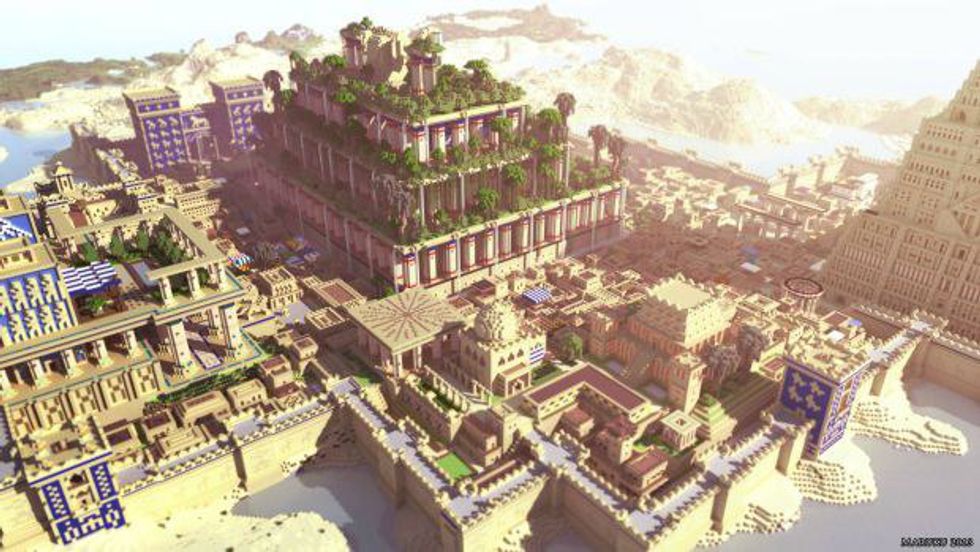“How many times does a generation get to witness the birth of an entirely new artistic medium? I mean games could be the collaboration between everything we’ve learned to date, as humans, about telling stories through visuals, through audio, and now with the added component of interactivity. I do think that we are on the precipice of an extremely exciting time right now, and that this is an amazing opportunity that we’re being given here.”
— Kellee Santiago, TEDxUSC “Are Video Games Art?” presentation
Oftentimes, when we think of "high art," we look to the past. We think of the beautiful paintings of the Renaissance, such as the Mona Lisa, or the work of brilliant classical musicians like Bach, Beethoven and Mozart. But the pinnacle of human artistic achievement may lie in a medium that is only half of a century old: the video game.
Art forms can express and convey emotions and ideas of all kinds in a variety of ways. Narrative art uses language to bring us richly detailed stories, settings, concepts and characters that we can fall in love with and use to understand and interpret the real world by comparison. Musical art can often capture and release emotions better than words can, allowing us to experience all kinds of feelings indirectly by listening to music for its own sake or directly by listening to music during other experiences to shape their emotional impact. Visual art has allowed us to capture images as they are and save them for centuries before the invention of the camera, allowed us to see things with our own eyes so surreal or unrealistic that we could only try to imagine them otherwise and allowed the artist to shape and stylize those images to change their effect.
Dramatic art, seen in plays, operas, and (more recently) films and TV shows, has the benefits of all three of these art forms. It combines the emotional impact and idea-conveying capacity of language, music and visuals, bringing a richer art where each element's contributions make up for the others' shortfalls—
it conveys just about everything that can be expressed through language by incorporating narrative art and just about everything that cannot by incorporating musical and visual art.The art of the video game, like dramatic art, incorporates all of the attributes of musical, narrative and visual arts. However, it reaches one step further by adding another crucial element: interactivity. Instead of being a "reader," a "listener," a "viewer" or an "audience member," someone who experiences a video game becomes a "player" and has the ability to personally impact the art as they experience it. This not only allows a greater immersion into the game, and thus more emotional impact, but also allows video games to convey ideas in new and different ways.
Interactivity is a vitally important element that allows video games to transcend other art forms by challenging the player in ways that other art forms simply can't. While reading a book, or watching a play, you may wonder, "What would I have done in that situation?" But, ultimately, you will never know. You would probably give yourself a free pass, as the participants of Stanley Milgram's conformity experiments did before experiencing the situations themselves: most participants thought they would give a 140-volt shock, at most, to an innocent person, and 60% of them shocked that person "all the way" at 450 volts.
A video game can challenge that kind of assumption by making you the actor, especially if it is a game with built-in freedom of choice. This can be accomplished through a system where you make specific decisions that impact the story of the game, like in the "Mass Effect" series, the "Dragon Age" series, "Undertale" and many more.
Here is an example of a decision that the player must make in "Mass Effect," where you (right) must confront your squadmate and good friend Wrex (left) about whether or not to destroy a facility made by the game's antagonist to create an army out of clones of Wrex's species, the krogans, when the krogans have suffered under harsh population control measures for centuries:
Video games' unique interactivity can also allow players to create new art, usually by giving the player tools to create and an infinitely large blank canvas to create with. This includes sandbox games like "Minecraft," which has led to some pretty stunning artistic creations like this Babylonian city:
Don't underestimate the artistic capacity of the video game, which has just about everything that other art forms have and more.
For more information on this subject, check out some of the following resources:
The Smithsonian: "The Art of Video Games"
TIME: "Video Games Are One of the Most Important Art Forms in History" and "It's Becoming Harder to Deny Video Games 'Art' Status"
Forbes: "An Argument That Video Games Are, Indeed, High Art" and "Why It's Time to Stop Arguing About Whether Video Games Are Art"
Tabittha Gordon via Odyssey Online: "Should Video Games Be Considered Art?"













































